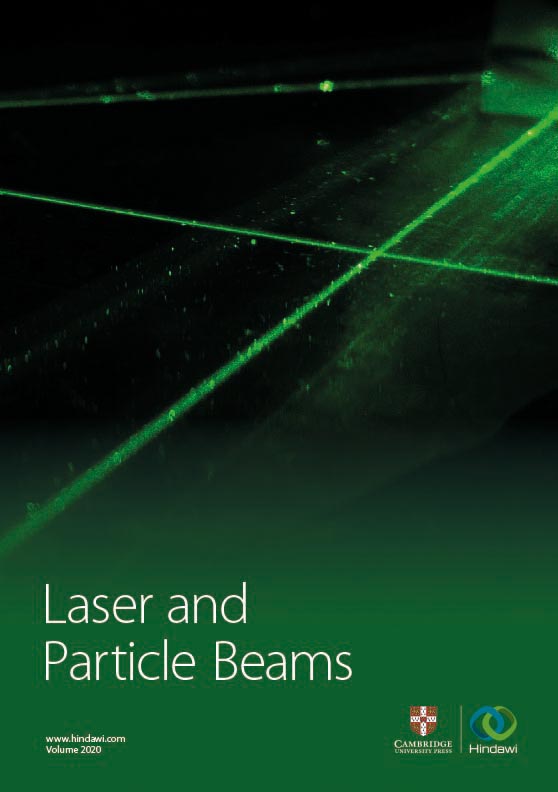 View fulltext
View fulltext
The laser-induced breakdown spectroscopy (LIBS) technique is one of the most promising laser-based analytical techniques. Coincidentally, the LIBS acronym was proposed by Radziemski and Loree in two seminal papers published in 1981, almost at the same time in which the Laser and Particle Beams journal started its publication. In this contribution, the evolution of the LIBS technique is discussed following a chronological collection of key papers in LIBS, some of which were in fact published on LPB.
Short-pulse, ultrahigh-intensity lasers have opened new regimes for studying fusion plasmas and creating novel ultrashort ion beams and neutron sources. Diagnosing the plasma in these experiments is important for optimizing the fusion yield but difficult due to the picosecond time scales, 10 s of micron-cubed volumes, and high densities. We propose to use the yields of photons and neutrons produced by parallel reactions involving the same reactants to diagnose the plasma conditions and predict the yields of specific reactions of interest. In this work, we focus on verifying the yield of the high-interest aneutronic proton-boron fusion reaction 11Bp,2α4He, which is difficult to measure directly due to the short stopping range of the produced αs in most materials. We identify promising photon-producing reactions for this purpose and compute the ratios of the photon yield to the α yield as a function of plasma parameters. In beam-fusion experiments, the 11C yield is an easily-measurable observable to verify the α yield. In light of our results, improving and extending measurements of the cross-sections for these parallel reactions are important steps to gain greater control over these laser-driven fusion plasmas.
The energy problem is an open issue becoming increasingly pressing. The possibility to use nuclear fusion as an alternative energy source is thus acquiring progressively more importance and many investors are pushing to achieve the goal of an electric plant based on fusion. The most studied reaction is the deuterium-tritium one, but this poses several technical issues related to the handling of the radioactive fuel and neutron generation. In this frame, the aneutronic 11B(p, α)2α fusion reaction has attracted the interest of many researchers. Despite a fusion reactor based on pB is still a long-term goal, the study of this reaction is important both for astrophysics research and for its possible employment in schemes of high brightness source of α particles for applications, as for instance in medicine. Nevertheless, the univocal identification of the produced alphas is a well-known challenging task when the reaction is triggered by high-intensity lasers. Indeed, due to the multifaceted emission typical of laser-matter interactions, the signal coming from alphas is often superimposed to that generated by protons and by other ions, and in many cases, it is therefore hardly recognizable. In this work, we analysed the possibility of employing a Thomson spectrometer (TS) with an adequate differential filtering system for the exclusion from the α-particle trace, the contribution of all other ionic species. Moreover, for the energy ranges where the filtering method cannot be successfully applied, we investigated the feasibility of integrating in the TS assembly a particle detector for time-of-flight (TOF) measurements.
This study is the further research of the path encoding pulse compression technique. In this study, the regularity of pulse compression gain is studied by adopting the numerical simulation and experiment measurement methods. For the lossless cavity, the power gain has the characteristic of equal pulse length with equal compression gain contribution according to the numerical simulation results. It means that the pulse compression gain is increased linearly along with the time length of the input pulse. The obtained pulse power gains are equal for the two subpulses intercepted arbitrarily form the input pulse with equal time length for the pulse compression. For the lossy cavity, the power gain usually does not increase significantly after the length of input pulse reaches to a certain value. The gain contribution decreases gradually along with the increase of time length of input pulse until the growth rate of gain contribution equals to zero. Assuming two subpulses with equal time length were intercepted from the input pulse, the gain contribution of the earlier subpulse is lower than that of the later subpulse. The measured results verified the simulated gain contribution regularity according to the established experimental system.
The topic of proton-boron fusion has recently attracted considerable interest in the scientific community, both for its future perspectives for energy production and for nearer-term possibilities to realize high-brightness α-particle sources. Very interesting experimental results have been obtained, in particular in laser-driven experiments but also using other experimental approaches. The goal of this special issue is to collect the most recent developments in experiments, theory, advanced targetry, diagnostics, and numerical simulation codes.







